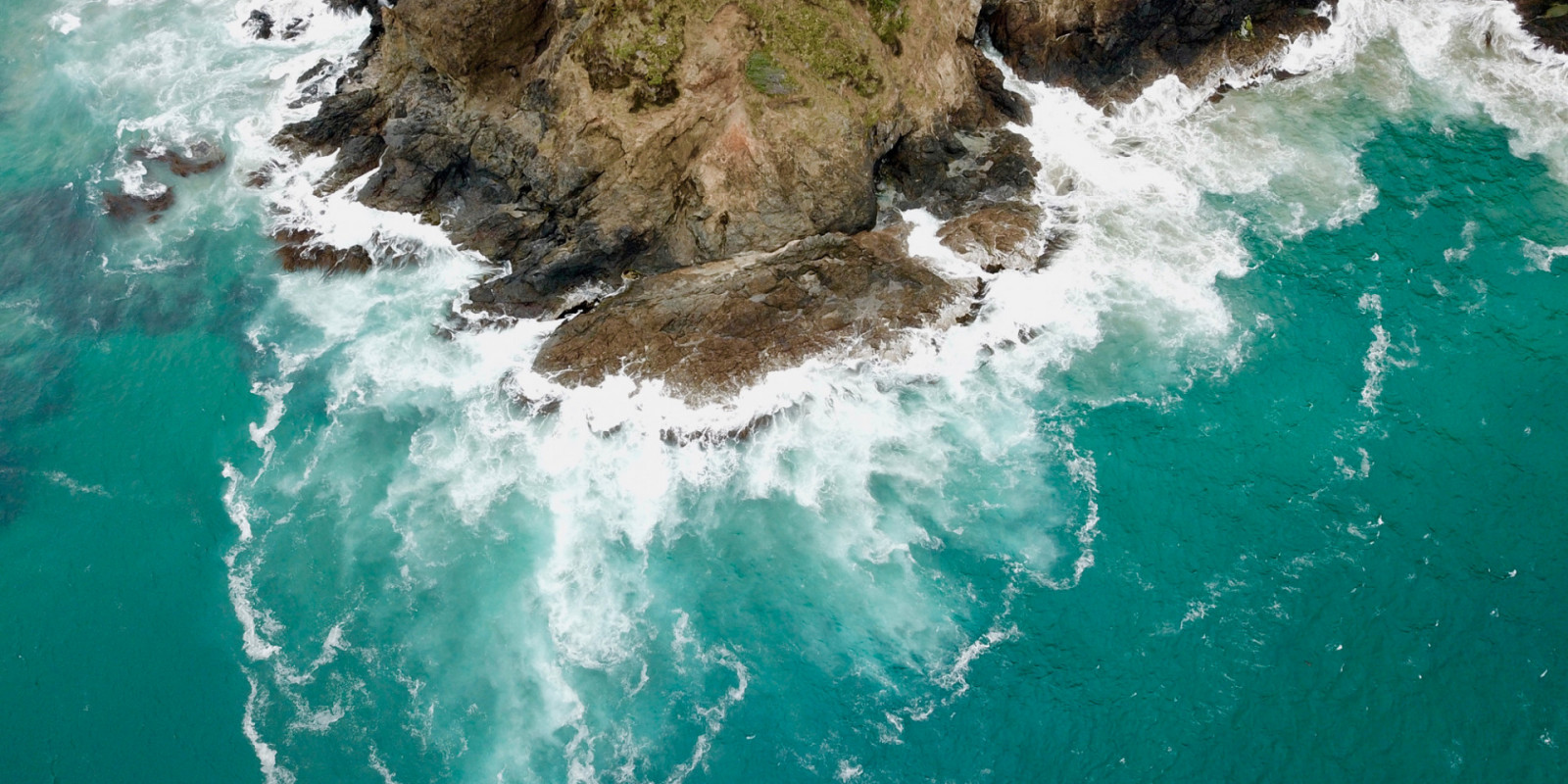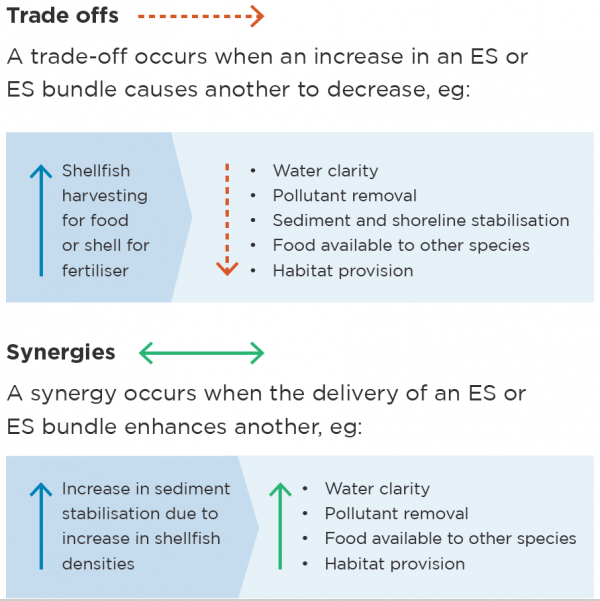- Guidance
Using ecosystem service bundles to improve marine management
Ecosystem service (ES) 'bundles' show how ES interact with each other and are affected by stressors – and which values might be affected for better or worse following a management decision.
ES are the goods and services that nature provides, which people benefit from. A single ecological process can underpin multiple services, eg shellfish filter feeding improves water quality, supports the food web and leads to kaimoana.
ES can be grouped into ‘bundles’, which are sets of associated services that appear together repeatedly across space and/or time. The services within and between bundles can interact as either synergies, positively interacting to have a combined effect greater than the sum of their separate effects, or trade-offs where one service is increased at the expense of another (see diagram below).
Provision of ES is often dependant on density and spatial scale – for example, you need a critical mass of bivalves (a minimum number/m2, exactly how many will depend on local conditions) to see benefits to water clarity and carbon sequestration.
How can ES bundles inform marine management?
- ES bundles are an interdisciplinary tool for managers, policy makers, iwi/hapū, businesses and communities
- Ecosystem services explain in lay terms how underlying ecological processes lead to the things that people value, eg ecosystem services like clean water and kaimoana/seafood (see diagram below).
- Bundles show how ES interact with each other and are affected by stressors – and which values might be affected for better or worse following a management decision.
- ES bundles support resource management decisions
- It is difficult to safeguard ES until we know where and how they are being generated, in what quantity, and how they interact with each other. This information enables us to quantify and map ‘hotspots’ of ES delivery and identify bundles. This in turn will enable marine managers to better assess the potential benefits and costs of a management decision.
- ES bundles act as a framework for further research or modelling
- The ES bundle concept can be used to model any type of ecosystem to quantify the effects of interactions between services in different habitats and locations.
- ES bundles facilitate a holistic management approach
- ES bundling supports holistic ecosystem-based management (EBM) by highlighting services that do not have a direct economic benefit but which are highly valued (eg natural beauty, mahinga kai), and may be reduced or lost if not considered when making management decisions.
Case study: More than just kaimoana
Shellfish provide a wide range of ecosystem services (ES) beyond the provision of food.
ES provided by shellfish
- Improved water quality and clarity – shellfish clean water by removing sediment and pollutants as they filter feed.
- Nutrient regulation – shellfish cycle nutrients and remove excess nitrogen, which helps mitigate eutrophication.
- Shoreline stabilisation – shellfish provide biogenic (biologically generated) habitat and reefs that protect the coast from flooding and storm surges.
- Manaakitanga – abundant shellfish enable whānau to express respect and hospitality to visitors through the provision of kaimoana/seafood.
- Habitat provision – shellfish shells provide a three-dimensional seabed habitat that supports other species.
- Increased seabed health – shellfish mix and irrigate the seabed (bioturbation) when they burrow and feed, which increases its capacity to support biodiversity.
- Whanaungatanga – abundant shellfish provides opportunities for wha-nau to nurture relationships that support identity, wellbeing, and knowledge retention, development and intergenerational sharing.
- Trophic transfer – shellfish are an important element in the food supply chain from phytoplankton to top predators.
Cultural and social values tend to be overlooked or under-represented in decision making because they are context specific (eg dependent on identity, ethnicity, religion) and difficult to measure. Methods used to identify, assess and value ecological processes and functions are not the same as those used for assessing cultural and social values. This gap can be addressed by combining ecological knowledge with mātaranga Māori and social science.

